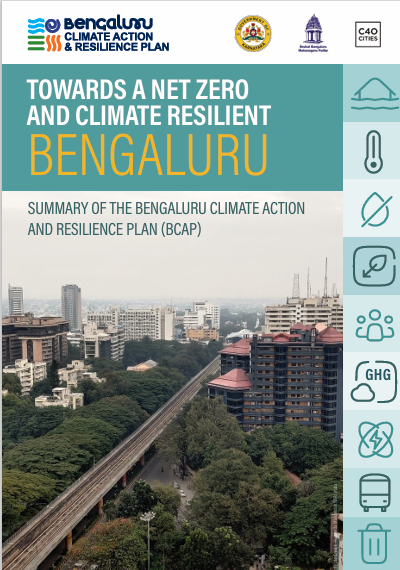Carbon credits are an essential mechanism in the fight against climate change, offering economic incentives to reduce greenhouse gas (GHG) emissions. Two leading organizations, Verra and the Gold Standard, provide recognized carbon credit certification methodologies. These methodologies vary based on the nature of the project and are designed to ensure that reductions are measurable, verifiable, and real. This essay explores the various types of carbon credit methodologies employed by both Verra and Gold Standard, categorized by the nature of the projects they certify.
1. Forestry and Land Use Projects
Verra’s VCS Program (Verified Carbon Standard)
Verra’s VCS offers a comprehensive range of methodologies in the Agriculture, Forestry, and Other Land Use (AFOLU) sector, supporting sustainable land use to mitigate climate change. Key project types include:
- Afforestation/Reforestation (AR): These projects aim to absorb carbon dioxide by converting non-forested land into forested areas.
- Reduced Emissions from Deforestation and Degradation (REDD+): This methodology supports projects that avoid deforestation or forest degradation, particularly in tropical regions, by conserving forest carbon stocks.
- Improved Forest Management (IFM): Projects under IFM focus on enhancing forest management to increase carbon sequestration.
- Sustainable Agriculture Land Management (SALM): This methodology addresses carbon storage through sustainable agricultural practices, such as crop rotation and reduced tillage.
Gold Standard
The Gold Standard also certifies Land Use and Forests (LUF) projects, focusing on community-centric sustainability efforts:
- Afforestation and Reforestation: Like Verra, Gold Standard certifies reforestation projects, but with additional emphasis on community engagement and biodiversity.
- Soil Organic Carbon (SOC): Gold Standard offers methodologies for projects improving carbon sequestration in soils, particularly in agricultural settings.
Comparison: While both Verra and Gold Standard cover similar ground in forestry and land use, Gold Standard often adds layers of social and biodiversity requirements, aiming for co-benefits beyond carbon sequestration.
2. Renewable Energy Projects
Verra
Verra’s methodologies for renewable energy projects promote the displacement of fossil fuels through cleaner energy sources, such as:
- Grid-connected Renewable Energy: Projects such as wind, solar, and hydropower that feed into national or regional grids.
- Distributed Renewable Energy: Smaller-scale projects such as solar panels or biogas units, often for decentralized, rural communities.
- Waste-to-Energy: Converting organic or industrial waste into energy, reducing landfill emissions and providing renewable energy.
Gold Standard
Gold Standard’s approach to renewable energy focuses heavily on sustainable development goals (SDGs) in addition to emission reductions:
- Micro-scale Renewable Energy: Projects focused on decentralized energy solutions, like solar home systems or micro-hydro units, are common under Gold Standard, particularly in off-grid regions.
- Clean Cooking Solutions: Gold Standard also includes projects replacing traditional biomass stoves with more efficient, low-emission cookstoves.
- Waste and Renewable Energy (WRE): Similar to Verra, this category includes biogas and waste-to-energy solutions but ensures community co-benefits and household-level energy access.
Comparison: While both Verra and Gold Standard certify large-scale renewable energy projects, Gold Standard places more emphasis on small-scale and community-based projects that contribute to local livelihoods and environmental sustainability.
3. Energy Efficiency Projects
Verra
Verra certifies projects that reduce energy consumption, thus lowering GHG emissions:
- Energy Efficiency in Buildings: Projects that improve insulation, lighting, and appliance efficiency, cutting energy demand in residential and commercial structures.
- Industrial Energy Efficiency: These projects focus on optimizing energy use in manufacturing and industrial processes.
Gold Standard
Energy efficiency methodologies under Gold Standard aim to combine emission reductions with community benefits:
- Efficient Cookstoves: As part of their commitment to health and well-being, Gold Standard certifies improved cookstove projects, which reduce fuel consumption and indoor air pollution.
- Energy-efficient Appliances: Projects providing energy-efficient refrigerators, air conditioners, or lighting are certified to reduce overall energy demand.
Comparison: Both registries cover energy efficiency, but Gold Standard typically frames these projects within a broader development narrative, emphasizing health and economic benefits for households in developing countries.
4. Waste Management Projects
Verra
Verra supports various waste management methodologies designed to reduce methane and other GHG emissions from waste:
- Landfill Gas Capture: This methodology captures methane from landfills and either flares it or uses it for energy production.
- Composting and Waste Diversion: Projects that divert organic waste from landfills to composting facilities or that repurpose waste into useful products.
Gold Standard
Gold Standard also certifies waste management projects, but with a distinct emphasis on social co-benefits:
- Organic Waste Management: Projects that prevent methane emissions by composting organic waste, often in conjunction with local agricultural initiatives.
- Recycling and Waste Diversion: Projects diverting waste from landfills, which may include both household and industrial waste streams.
Comparison: Both organizations cover waste management, but Gold Standard’s waste projects often emphasize community health, recycling education, and local employment, in addition to emission reductions.
5. Transport Sector Projects
Verra
Verra offers specific methodologies for emission reductions in the transport sector, such as:
- Fuel Efficiency Improvements: Projects focused on making vehicle fleets more fuel-efficient, either through technology upgrades or optimized logistics.
- Modal Shift Projects: Initiatives that encourage a shift from high-carbon modes of transport (e.g., cars or trucks) to low-carbon alternatives (e.g., rail, public transport).
Gold Standard
Gold Standard has a more limited scope in the transport sector but includes:
- Sustainable Urban Transport: Projects that encourage walking, cycling, or the use of public transportation to reduce emissions from private vehicles.
Comparison: Verra’s methodologies are broader and more technically focused, whereas Gold Standard remains community-oriented, emphasizing urban mobility and co-benefits.
Conclusion
Both Verra and Gold Standard are leaders in carbon credit certification, offering a wide array of methodologies to address different types of climate projects. Verra’s methodologies are typically broader, encompassing large-scale, technical solutions across multiple sectors. On the other hand, Gold Standard places a strong emphasis on social and environmental co-benefits, ensuring that projects contribute not just to emission reductions but also to sustainable development and community welfare.
By understanding these methodologies and their application in various sectors, carbon market stakeholders can make more informed decisions that align with both climate goals and broader social objectives.



Leave a Reply